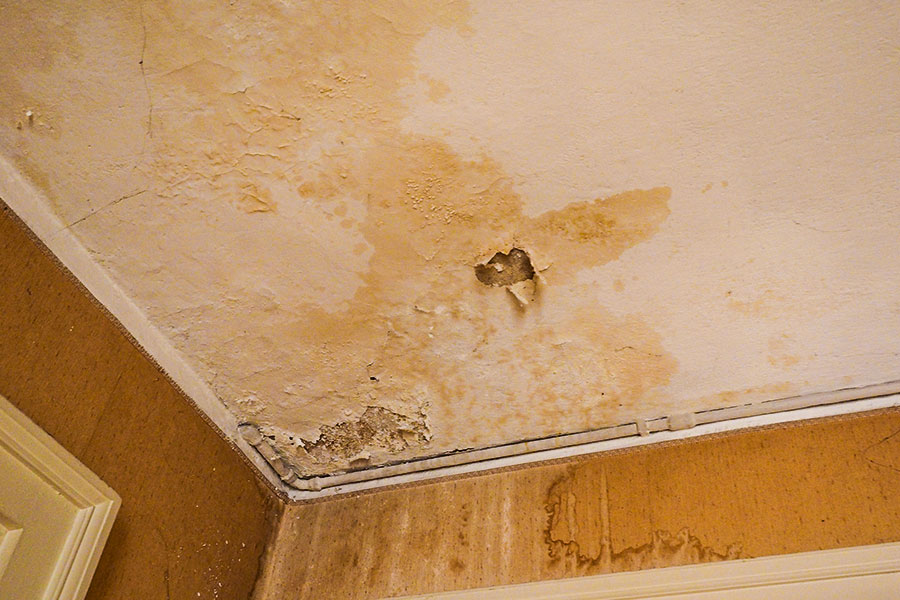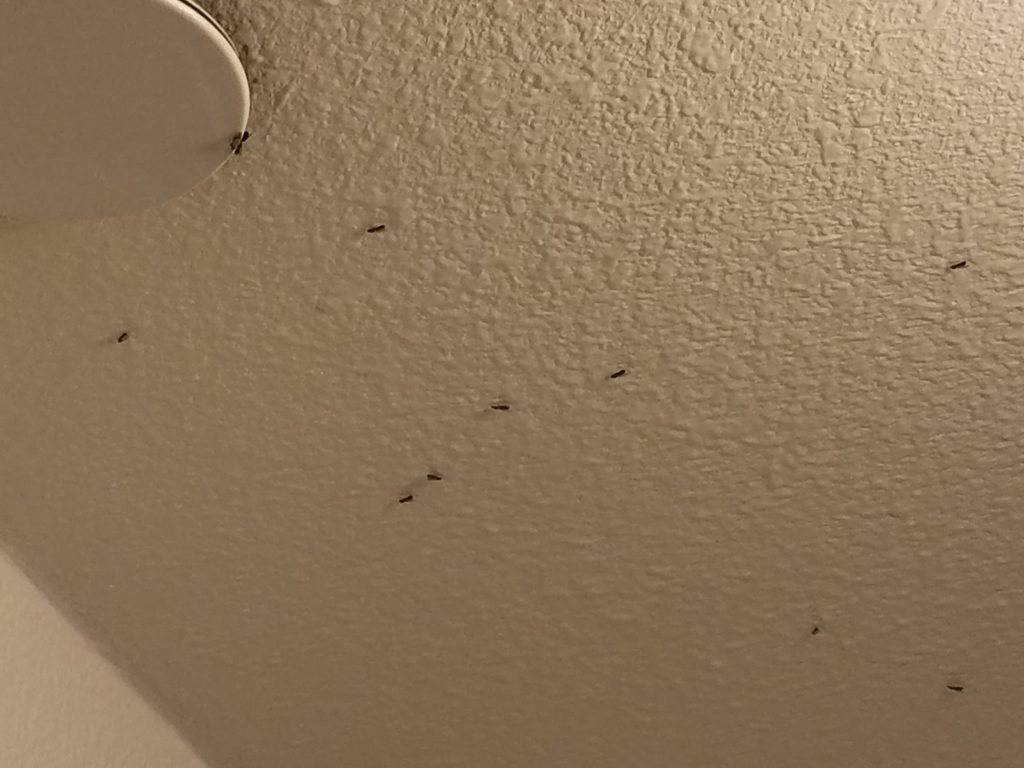Ceiling stains can be an unsightly and perplexing issue in any home. If you’ve ever wondered about the “Ceiling Stain Cause” in your living space, this comprehensive guide will delve into the various factors contributing to ceiling stains and provide insights on how to address them effectively.

Unveiling the Culprits: Ceiling Stain Cause
Ceiling stains are not only an aesthetic concern but can also signal underlying issues that require attention. Let’s explore the common causes behind ceiling stains and gain a better understanding of how to identify and resolve them.
Read too: Understanding and Addressing Termite Ceiling Damage: Unveiling the Hidden Threat
Leaky Roof or Water Damage
Identifying Characteristics:
- Water stains on the ceiling often appear as brown or yellowish discolorations.
- Stains may be accompanied by peeling paint or bubbling plaster.
Possible Causes:
- Leaky Roof: Damaged or missing shingles, deteriorated flashing, or compromised roof materials can allow water to penetrate and cause stains.
- Water Damage: Plumbing leaks, burst pipes, or condensation issues can contribute to ceiling stains.
Resolution:
- Address roof leaks promptly by inspecting and repairing damaged areas.
- Identify and fix plumbing issues to prevent ongoing water damage.
- Consider improving ventilation to reduce condensation-related stains.
Ceiling Stain Cause: Mold and Mildew Growth
Identifying Characteristics:
- Stains accompanied by a musty odor may indicate mold or mildew growth.
- Black or greenish discolorations are common indicators of fungal growth.
Possible Causes:
- Excess Moisture: Poor ventilation, high humidity, or water infiltration can create conditions conducive to mold and mildew.
- Water Seepage: Leaks from roofs, pipes, or windows can lead to persistent moisture and fungal growth.
Resolution:
- Identify and address the source of excess moisture.
- Clean and remove mold or mildew using appropriate cleaning solutions.
- Improve ventilation in affected areas to discourage future growth.
Ceiling Stain Cause: Smoke or Soot Accumulation
Identifying Characteristics:
- Stains near light fixtures or ventilation openings.
- Dark, sooty marks on the ceiling.
Possible Causes:
- Smoking Indoors: Tobacco smoke can leave residue on ceilings.
- Candle Burning: Burning candles, especially in confined spaces, can produce soot that accumulates on surfaces.
Resolution:
- Avoid smoking indoors to prevent further soot accumulation.
- Use smokeless candles or ensure proper ventilation when burning candles.
Ceiling Stain Cause: Pest Infestation
Identifying Characteristics:
- Stains accompanied by visible signs of pest activity, such as droppings or nesting materials.
- Scratching or scurrying sounds may indicate the presence of pests in the ceiling.
Possible Causes:
- Roof Rats or Mice: Infestations in attics or crawl spaces can lead to staining.
- Insects: Termites, carpenter ants, or other insects may cause damage that results in stains.
Resolution:
- Address pest infestations promptly by consulting with a pest control professional.
- Seal entry points to prevent further infestations.
Ceiling Stain Cause: Structural Issues
Identifying Characteristics:
- Stains accompanied by visible cracks or sagging in the ceiling.
- Structural deformities may be evident in severe cases.
Possible Causes:
- Foundation Issues: Uneven settling or structural problems in the foundation can impact the ceiling.
- Overloaded Ceiling Joists: Excessive weight on the ceiling may lead to structural damage.
Resolution:
- Consult with a structural engineer to assess and address foundation issues.
- Reinforce or redistribute weight on ceiling joists as necessary.
Conclusion
In conclusion, understanding the “Ceiling Stain Cause” is crucial for effective resolution. By identifying the underlying factors contributing to ceiling stains, homeowners can take targeted steps to address the root causes and prevent further damage. Regular inspections, prompt repairs, and appropriate maintenance are key to maintaining a clean and structurally sound ceiling. If uncertain about the cause or extent of ceiling stains, consulting with professionals can provide valuable insights and guidance for a lasting solution.
Remember, addressing the cause is as important as treating the visible stain to ensure a comprehensive and effective solution.
